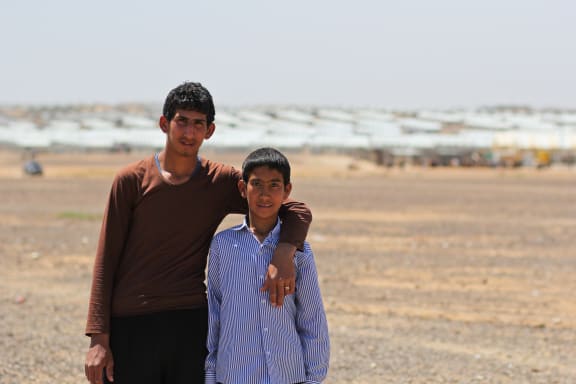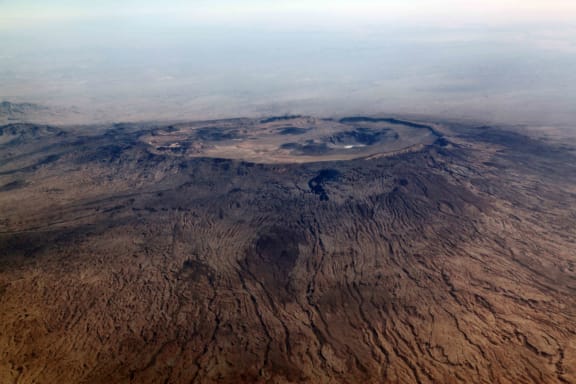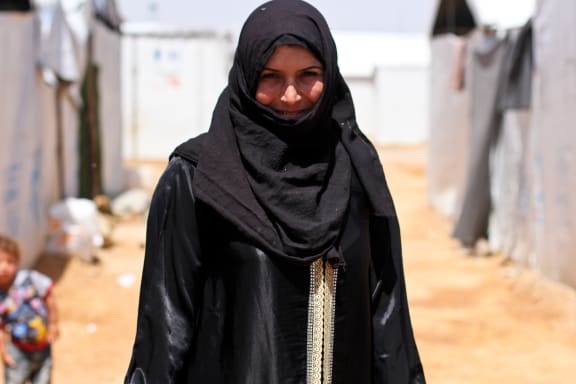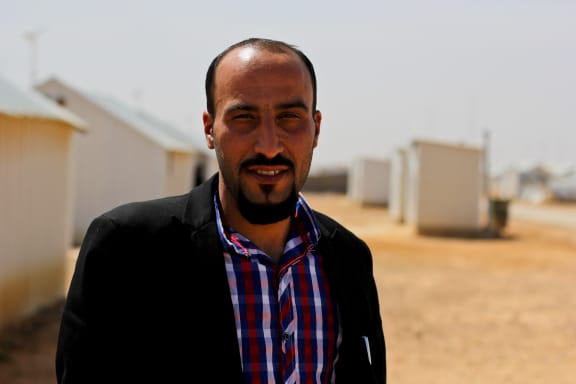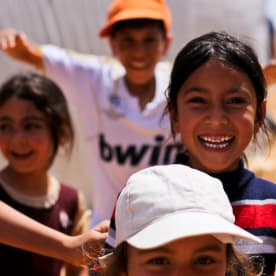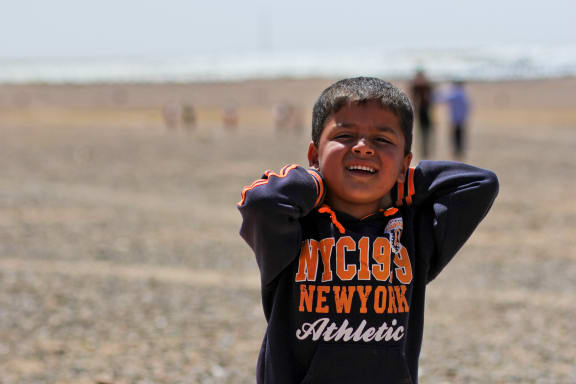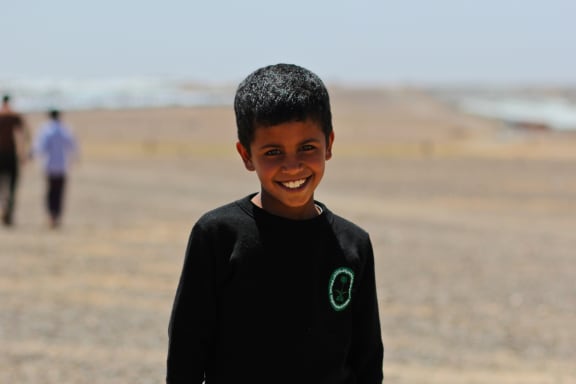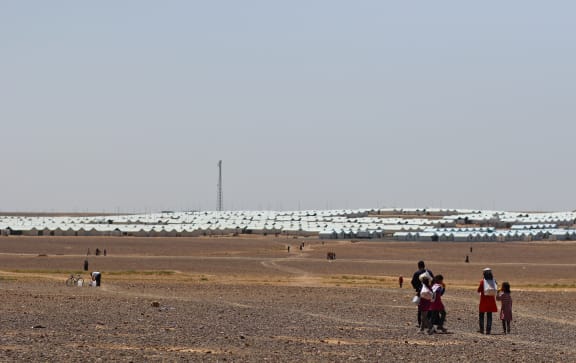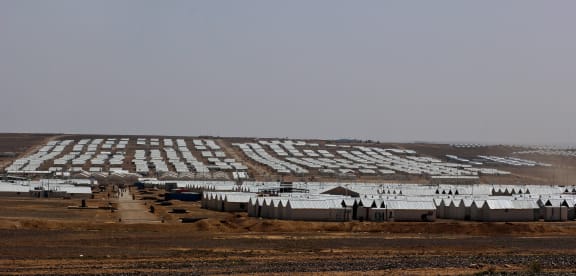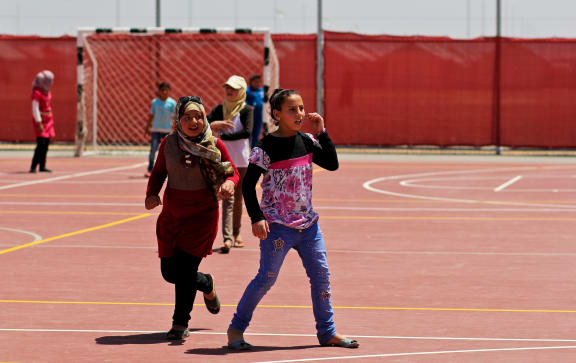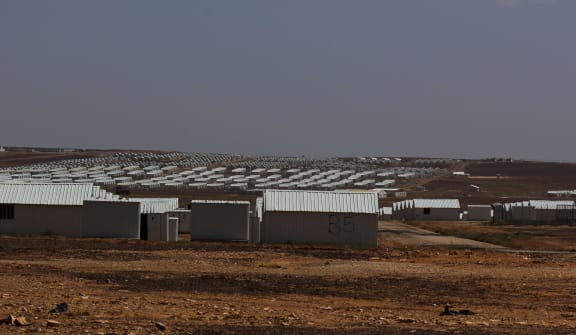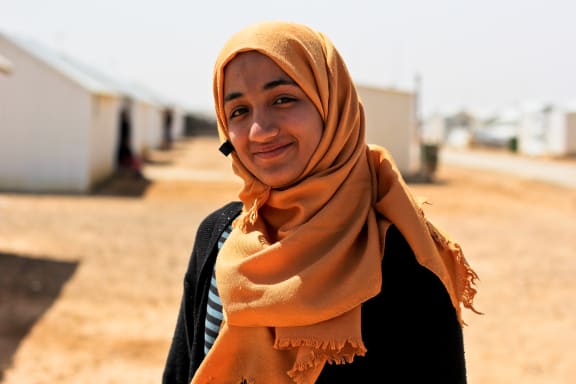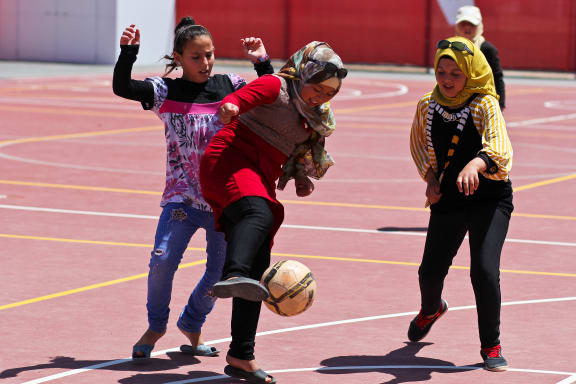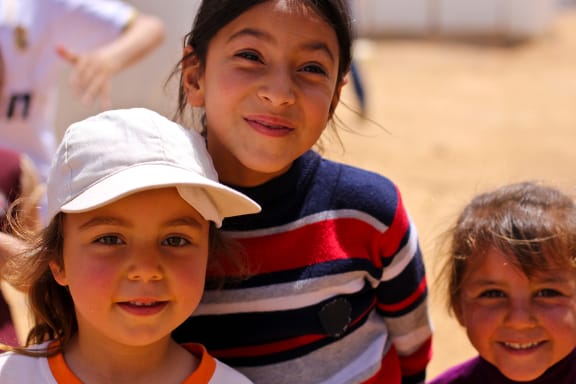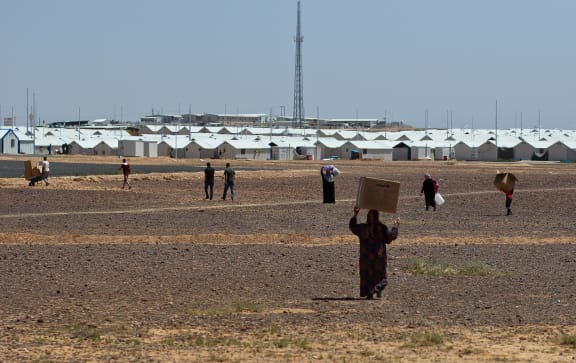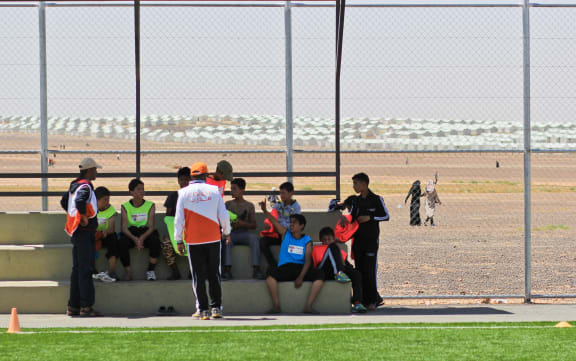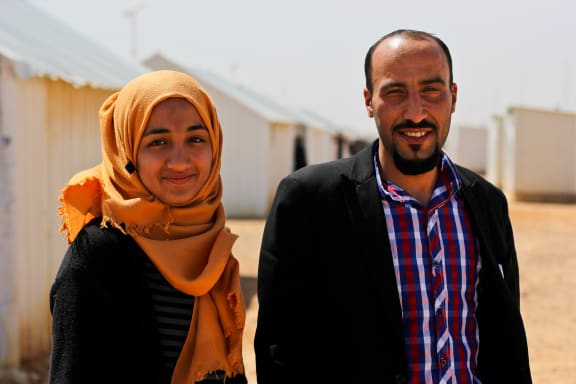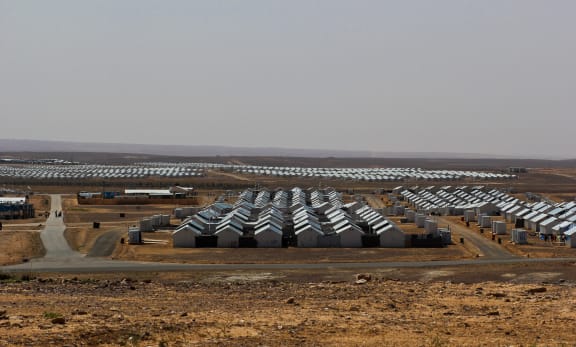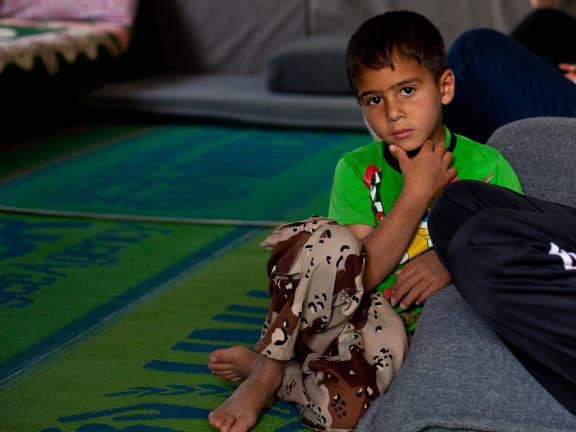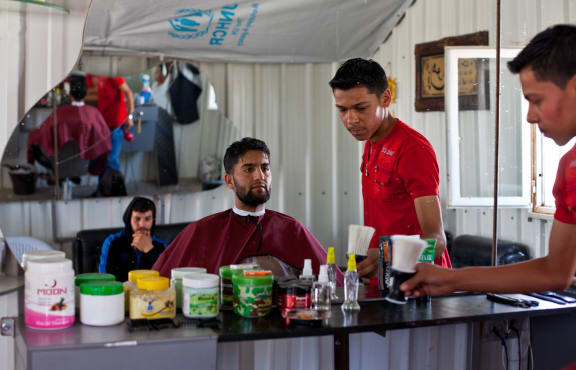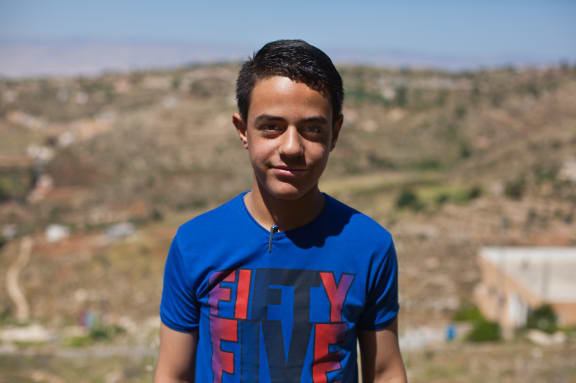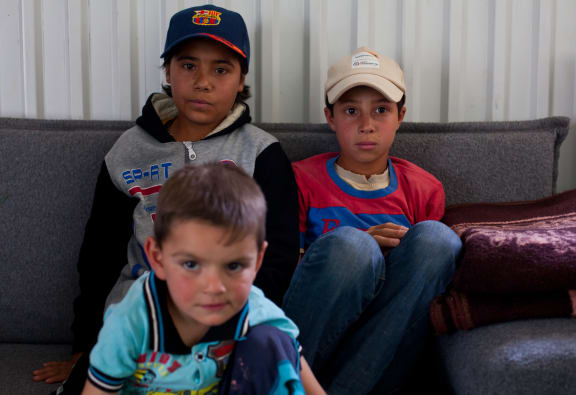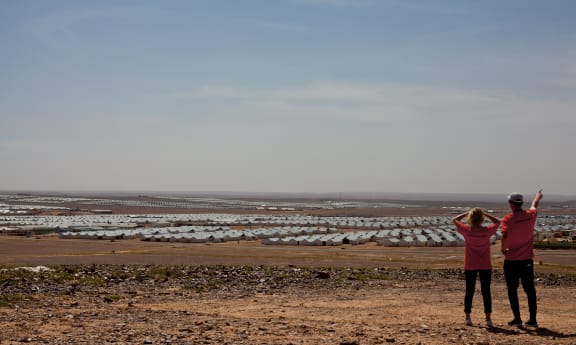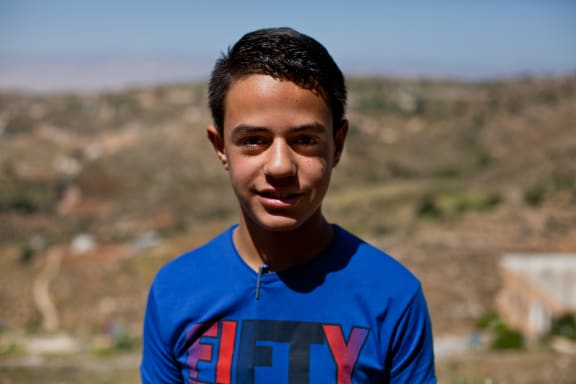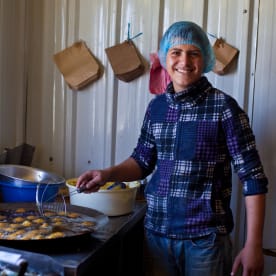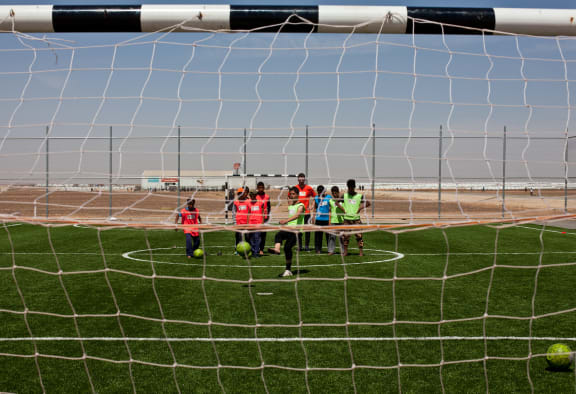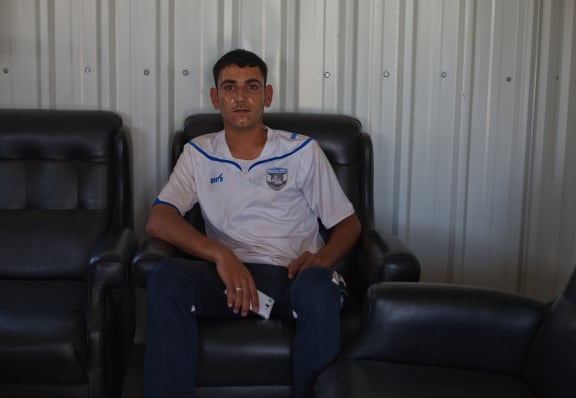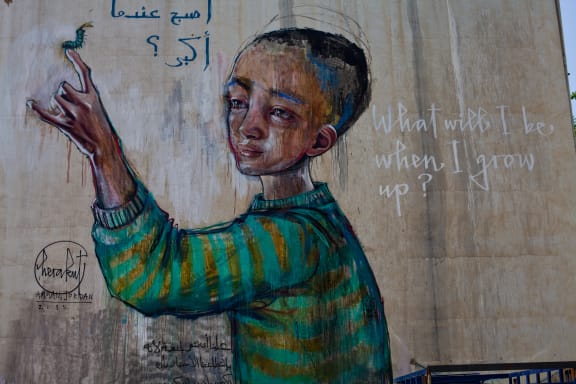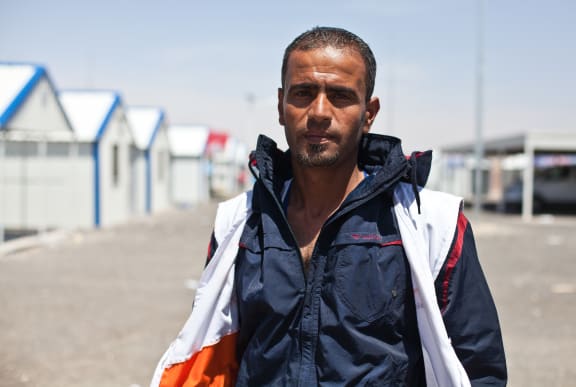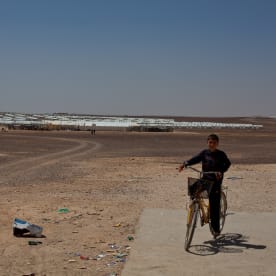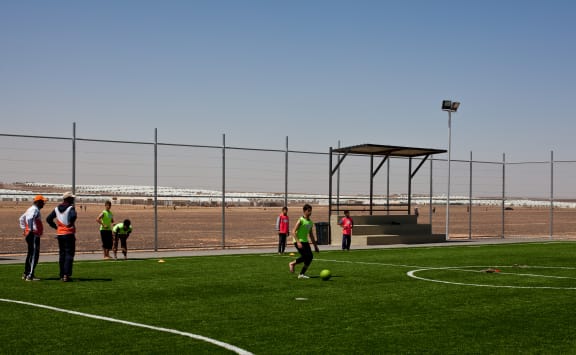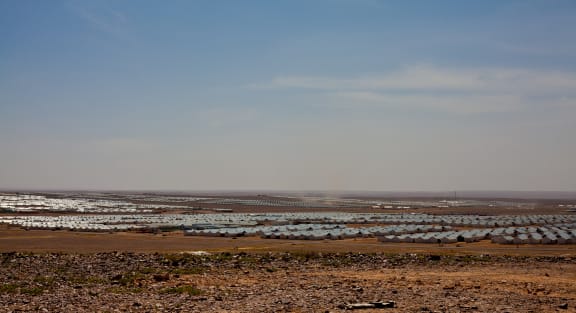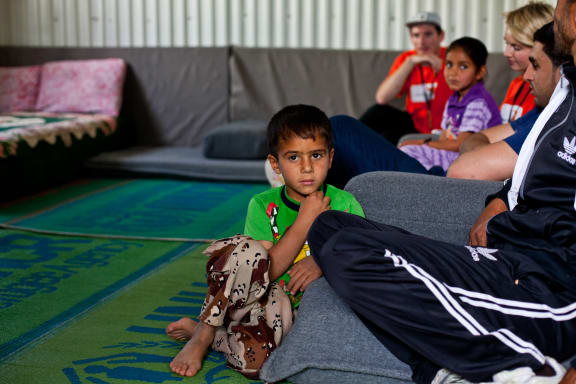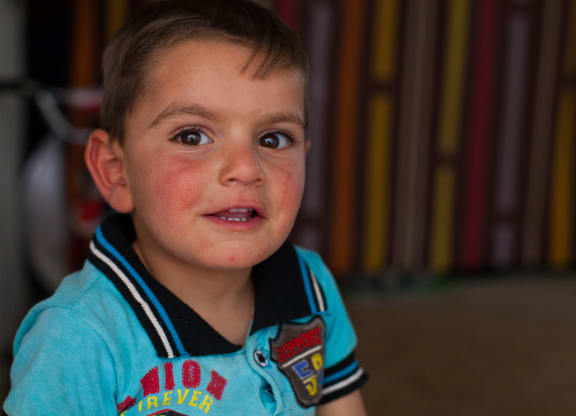Azraq camp in Jordan is home to 35,000 Syrian refugees, and is growing by 300 to 500 people every day.
The camp covers 15 km2 of a remote desert plain, exposed to sand storms, freezing winters and intensely hot summers.
What began as a short-term solution for Syrians fleeing conflict in their homeland, has become a semi-permanent city - complete with schools, sewage systems, sports fields, barber shops and market places.
Fifty percent of people in the camp are children.
Worldvision's Simon Day has just been in Jordan at the camp and describes it as both amazing and heartbreaking.
Read an edited snapshot of Simon Day’s conversation with Kathryn Ryan
KR: This is like a city almost – a refugee city
SD: You could definitely call it a city. There’s currently 10,000 of these 6 by 4.5 metre – they call them caravans – but they don’t actually move, and these are designed for up to six people and that’s 27m2. So it’s not a lot of space, but the traditional Syrian family units like to live together – so that’s part of the idea they’ve tried to preserve this in the camp. They’re built in villages where people from similar areas in Syria get to live together and form communities and build relationships.
KR: What were your first thoughts as you approached [the camp]?
SD: It feels like a prison camp in many ways, you arrive and you go through a gate that’s guarded by Jordanian soldiers. These looks like cells in many ways, but at the same time there’s a huge degree of freedom – you get to move around as much as you want, you can come and go from the camp as you please. A lot of the people go and visit the friends or family in town, they can seek specialist medical help from the cities if they want. So there is that degree of freedom, but the mundanity and the nihilism in these buildings and this dessert convey is really quite intense and quite scary in many ways.
KR: The camp’s grown to 35,000 Syrian refugees. That’s the size of a mid-sized provincial city in this country.
SD: Definitely, and you feel the size of it for sure. There are people washing clothes at the water pumps, carrying supplies across the dessert to their homes. And there isn’t public transport so they have to walk quite large areas, because this is a really big place – there is a supermarket, there a sports fields, there are schools. It really has the feel and the reality of a functioning city.
KR: And more arriving every day – 300-500 people every day
SD: And there’s more who want to come as well. There’s a process they have to go through to bring the refugees into the camp, the security process. Where they’re initially house in what’s known as Camp Five, where they go through a lot of security checks before they are welcomed into the camp itself where they get a lot more freedom, and it is part of the process that’s necessary in a crisis like this.
KR: What are the facilities for the children? Because out of 35,000 people 50 percent of them are children. What provisions are made for their education – for their wellbeing? How does that work?
SD: That’s a really important part of the work World Visions does, and other NGOs, is providing education, providing psychosocial support for children and also providing them spaces and opportunity to just be children again. So many of them have had to grow up so fast, and see things that no child ever should, that we give them the opportunity just to play, just to have fun and to just learn again. Before that opportunity of just being a child and all that growth that goes with being a young person evaporates for them.
